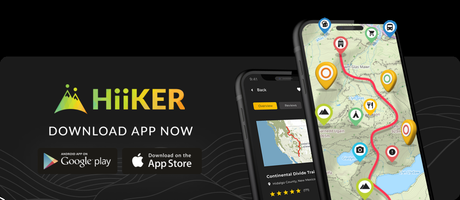Introduction
Hiking is a popular outdoor activity that can be enjoyed by people of all ages and fitness levels. Whether you’re looking to explore new terrain, connect with nature, or simply get some exercise, hiking is a great way to do so.
However, for beginners, it can be daunting to know where to start. That’s where this comprehensive guide comes in. In this post, we’ll cover everything you need to know to start hiking, from the gear you’ll need to the safety considerations you should keep in mind. So, if you’re ready to hit the trails, let’s get started!
Benefits of Hiking for Beginners
Hiking has a number of physical, mental, and environmental benefits that make it an excellent activity for beginners. Physically, hiking can help improve your cardiovascular health, build muscle strength, and increase your endurance. Mentally, hiking can help relieve stress, boost your mood, and promote a sense of well-being. Additionally, hiking can help you connect with nature and learn about wildlife, which can be beneficial for both your mental and emotional health.
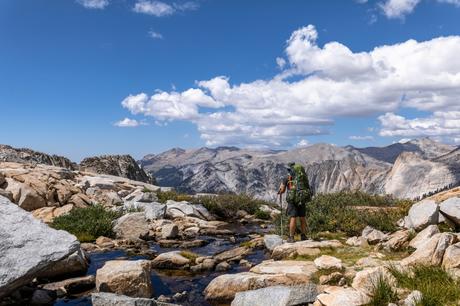
And, as you become more experienced and comfortable on the trails, you can explore more challenging terrain and see even more of the great outdoors. So, if you’re looking for an activity that is both enjoyable and beneficial for your health and well-being, hiking is an excellent choice. (We’re not bias at all!)
Getting Started with Hiking
Gear and Equipment Needed
One of the most important aspects of hiking is having the right gear and equipment. The right hiking shoes are essential for a safe and comfortable hike, so it’s important to invest in a pair of sturdy, well-fitting shoes with good traction. Sometimes this can be a bit of a barrier for first-time hikers. You don’t need the fanciest / most expensive trail runners or hiking boots to start hiking. Don’t overthink it! If you find the same enjoyment in hiking as we do, you improve your hiking gear over time.
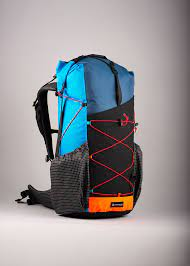
A backpack is also essential for carrying water, snacks, sunscreen, and other essentials. Consider investing in a backpack with a hydration system, so you can easily drink water without having to stop and take off your backpack. A water bottle is also a good option, but be sure to choose a lightweight, durable bottle that won’t leak or break.
Choosing the Right Trail for Beginners
When choosing a trail for beginners, it’s important to consider the terrain and distance. Look for trails that are relatively flat and have a shorter distance. Check the trail’s difficulty rating, which is available on HiiKER, and choose a trail that matches your fitness level and experience. It’s also a good idea to choose a trail that is well-marked and popular, so you can easily find your way and ask for help if needed. But even if it doesn’t, downloading trail maps is free on HiiKER, so you will have instant offline access to the trail.
Safety Considerations
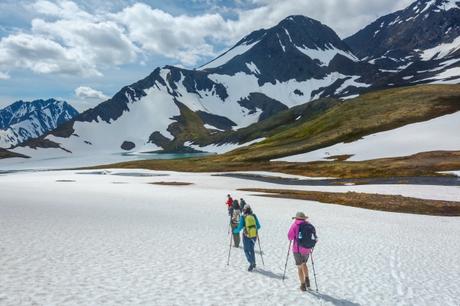
Safety should always be a top priority when hiking, especially for beginners. Be sure to carry a basic first aid kit in your backpack, including items like bandages, gauze, and antiseptic wipes. It’s also a good idea to hike with a partner, so you can watch out for each other and help each other in case of an emergency.
If you must hike alone, be sure to tell someone where you’re going and when you plan to return. Check the weather forecast before heading out, and be prepared for changes in weather conditions. And always follow basic hiking safety rules, such as staying on designated trails, avoiding hiking at night, and download your map to your device before hitting the trail.
Leave No Trace Principles
As you explore the outdoors, it’s important to be mindful of the impact you have on the environment. The Leave No Trace principles are a set of guidelines designed to help hikers minimize their impact on the environment. These principles include packing out all trash, staying on designated trails, and avoiding damaging plants and wildlife. By following these principles, you can help ensure that the trails you enjoy today will be available for future generations to enjoy as well.
Preparing for Your First Hike
Before hitting the trails, it is important to prepare your body physically and mentally. Building endurance through cardio and strength training is crucial, as hiking can be a strenuous activity. Cardio exercises like running, cycling, or swimming can help improve your stamina, while strength training exercises such as squats, lunges, and step-ups can help build muscle and improve balance.
Stretching and flexibility exercises are also important to prevent injuries. Dynamic stretching before hiking, such as leg swings and high knees, can help prepare your muscles for the activity. After hiking, static stretching such as hamstring stretches and quad stretches can help reduce muscle soreness and improve flexibility.
Chase mountains is a fantastic resource for a variety of hiking strength and mobility exercisesStaying hydrated and fueled on the trail is crucial to prevent fatigue and dehydration. It’s important to bring enough water and snacks for the hike, as well as a water filtration system if needed. Energy-rich snacks such as trail mix, energy bars, and fresh fruit are great options for fueling your body on the trail. Additionally, it’s important to listen to your body and take breaks when needed.
On the Trail
Once you’re on the trail, it’s important to practice good hiking etiquette. Yielding to others, staying on designated trails, and packing out your trash are just a few ways to ensure you leave no trace and minimize your impact on the environment. Additionally, being respectful of wildlife and their habitats is important for their safety and the safety of hikers.
Basic navigation skills are also important for staying safe on the trail. Using HiiKER offline maps, staying on trail markers, and knowing how to read the terrain are all important skills to have. It’s also a good idea to let someone know your hiking plans before hitting the trail and carrying a whistle or signalling device in case of an emergency.
Staying safe on the trail also means being aware of potential hazards. Checking weather conditions before heading out and knowing how to prepare for changes in weather is important for avoiding dangerous situations. Additionally, avoiding contact with wildlife and knowing how to respond to encounters is crucial for staying safe on the trail.
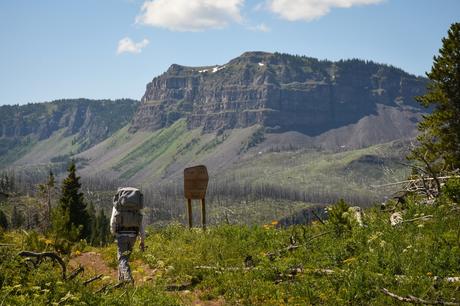
Finally, enjoy it. Remember the reason you are out there. You might be hiking for many different reasons, but the most important thing is that you embrace your surroundings and enjoy it. The sun may not be shinning, it might be too hot, it might be too cold, but if you prepare correctly, you should be able to see past these minor inconveniences and to enjoy the hiking experience.
Conclusion
In summary, hiking for beginners can be an exciting and rewarding experience, but it’s important to start with the right gear, choose appropriate trails, and practice safe hiking habits. Building endurance and preparing for your first hike with stretching and hydration can help prevent injury and make the experience more enjoyable. On the trail, practicing good hiking etiquette, basic navigation skills, and staying aware of potential hazards are important for staying safe and minimizing your impact on the environment.
Don’t let the idea of hiking intimidate you – it’s a fun and accessible activity for people of all skill levels. Whether you’re looking for a solo adventure or a group outing, hitting the trails is a great way to connect with nature and improve your physical and mental health.
So what are you waiting for? Lace up your hiking shoes, download your map, and hit the trails! And if you found this guide helpful, be sure to share it with your friends and leave a comment with your own beginner hiking tips. Happy hiking!
